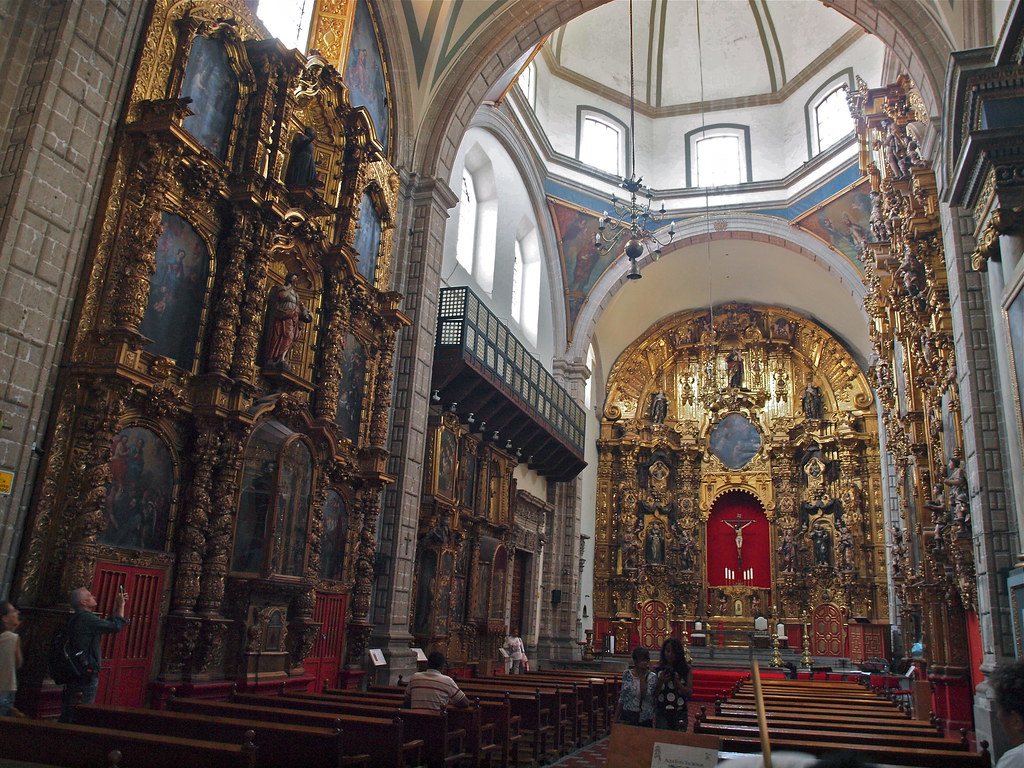
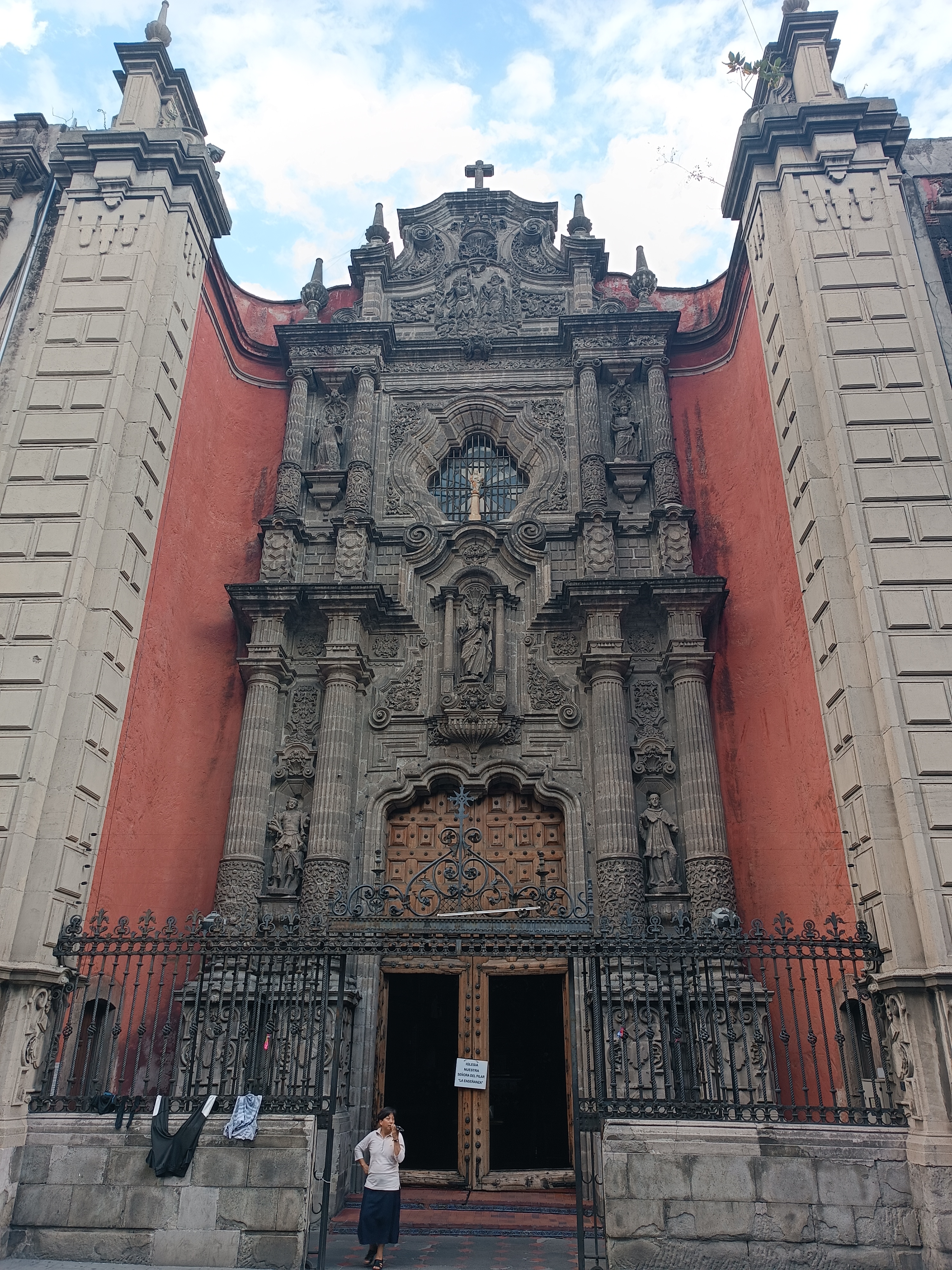
Fotografía: Alejandro, Attribution 2.0 Generic (CC BY 2.0) license.

The Templo de la Enseñanza was part of a well-regarded 18th-century teaching convent for women and girls. “The Teaching Temple” is today the parish of Our Lady of the Pillar. It’s the remaining church from what was a much larger complex of residential and educational buildings. It’s also an important point on the Calle de Donceles.
Founded by Mother Maria Ignacia Alzor, it was to be a public school for girls and a convent. It came to be the most renowned institution of its kind in New Spain.
A monumental Baroque building, it was completed by the architect Francisco Guerrero y Torres. He worked on the site from 1772 through 1778.
The successful “Churrigueresque” here is often referred to as the ultimate in New World Baroque. It’s likely among the last buildings of its kind. Neo-classical styles would come to dominate all constructions after this one. The same architect is responsible for the Iturbide Palace and the Pocito Chapel in La Villa de Guadalupe.
Here though, we’re going to find, inside, one of Guerrero y Torres’s best altarpieces. You’ll also want to check out the stunning paintings, mostly by a famous artist of the period named Andres Lopez. These depict the Assumption of Mary, the Virgin of the Apocolypse, and one most symbolic is a fresco on the vault dedicated to the Virgin of the Pillar. It depicts the Virgin Mary appearing to St. James the Apostle. In the 20th century it was especially important to members of the exile community who’d fled the Spanish Civil War of the 1930s. They’d come especially on October the 12th.
This complex functioned as a religious center until the 19th century reform laws, when many religious properties were seized by the government. At that time, many temples and churches were put to use for other public services.
In this case, the school building was converted to use for the offices of the Public Education System and the the convent became the National College. The chapel though, remained pretty much unchanged down to the original art works, and this because of the spectacular artistic value it showed, even then, and already after hundreds of years.
Very near to all of the other attractions on Donceles street, and in the city center, this one makes a very worthy place to visit.
The church offers limited guided tours, Wednesdays, Saturdays, and Sundays, and as there is much to see and experience, these are recommended.
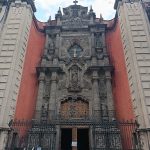 In 1754, the sisters of the Company of Mary entered a convent dedicated to the Virgin of the Pilar de Zaragoza in Mexico City. The temple is attributed to Francisco de Guerrero y Torres (1779) and the convent and school were the work of Ignacio Castera (1805). The beautiful interior of the temple is a great example of the novohispanic Baroque of the 18th century. Within the façade stands a the sculpture of the Virgin of Pilar carved in alabaster.
In 1754, the sisters of the Company of Mary entered a convent dedicated to the Virgin of the Pilar de Zaragoza in Mexico City. The temple is attributed to Francisco de Guerrero y Torres (1779) and the convent and school were the work of Ignacio Castera (1805). The beautiful interior of the temple is a great example of the novohispanic Baroque of the 18th century. Within the façade stands a the sculpture of the Virgin of Pilar carved in alabaster.
Heart of México Walking Route: Loreto-San Ildefonso Route
< < Old Christ College | Route 6: Moneda - Santísima > >
Proyecto “Corredor de Cultura Digital”.
Nombre de la investigación: Investigación Centro Histórico, Monumentos, Edificios y Puntos de Interés (2023)
Dirección de investigación y diseño de Rutas: Acércate al Centro A.C. Guadalupe Gómez Collada
Coordinación e investigación histórica: Fideicomiso del Centro histórico Dir. Maestra Loredana Montes
 +52 (55) 5702 1843
+52 (55) 5702 1843
 http://elpilarlaensenanza.blogspot.com/
http://elpilarlaensenanza.blogspot.com/

Nearest at 0.03 kms.

Nearest at 0.05 kms.
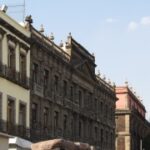
Nearest at 0.06 kms.

Mexico City's historic and first-recognized Jewish temple . . .

A modern graphic collection in an outstanding Baroque palace from the 18th century.
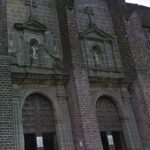
A striking Baroque work by Pedro de Arrieta stands the test of time.
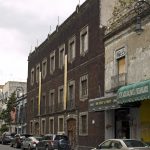
One of Mexico City's earliest temples is today a cultural center and museum.
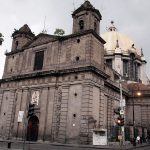
One of the most striking Neoclassical churches in the city center, the Church of Nuestra Señora de Loreto is also one of the most crooked.